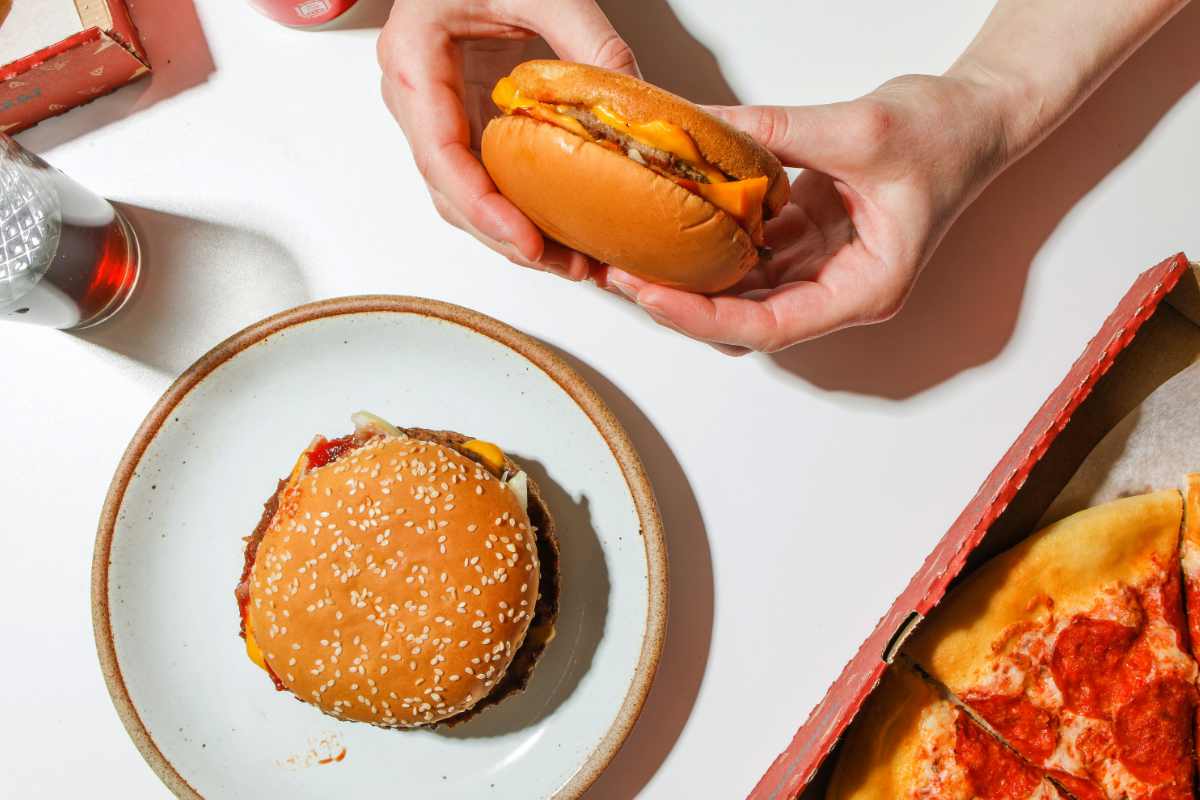
According to researchers, it’s actually the other way around: the process of gaining weight causes us to get hungry and therefore eat too much.
The numbers don’t lie. If we look at percentages of overweight in the Netherlands, it turns out that half of all adults are overweight. 13.9 percent are even seriously overweight. Children cannot escape it either. For example, 14.7 percent of Dutch children between the ages of 4 and 17 are overweight. It means that these people are at higher risk for heart disease, stroke, type 2 diabetes, and certain types of cancer. If you want to lose weight, you are often told to ‘eat less and exercise more’. But to what extent is that actually true?
Energy balance model
The ‘eat less and exercise more’ approach is based on the age-old ‘energy balance model’. This model states that weight gain is caused by eating more calories than you burn. It is not surprising that this often happens. We are surrounded by tasty, cheap and processed foods, making it easy for many people to eat more than they actually need in terms of energy. This imbalance is then further exacerbated by our ‘sedentary’ lifestyle. This, coupled with too little physical activity, would also be the driving force behind the obesity epidemic.
Energy balance disorder
But now researchers are questioning the entire effectiveness of the energy balance model. “For most of the last century, obesity was considered an energy balance disorder caused by ‘overeating’ relative to metabolic needs,” David Ludwig tells us. Scientias.nl. “Based on this view, the prevailing advice has been to ‘eat less and exercise more’, for example through a low-calorie diet and an effective exercise program. But this approach has not worked. Obesity continues to increase in the population, despite the continued focus on energy balance.” It means that the energy balance model has visibly failed in practice. The number of people with overweight and obesity-related diseases has steadily increased. But how come? “In our paper, we argue that the problem lies in the basic understanding of the energy balance itself,” says Ludwig. “It doesn’t take into account decades of research into the biology of weight management.”
What’s wrong with it?
According to Ludwig, the energy balance model does not help us understand the biological causes of weight gain. “For example, during the growth spurt, an adolescent may consume hundreds of calories more than he burns,” he says. “But is this ‘overeating’ making him bigger, or is the rapid growth making him hungry and eating more? Obviously the latter.” The researcher points out the fundamental shortcomings in the energy balance model. He carries in his studies He therefore proposes an alternative model that better explains obesity and weight gain: the carbohydrate-insulin model.
Carbohydrate-Insulin Model
The carbohydrate-insulin model makes a rather bold claim: eating too much is not the main cause of obesity. “The process of gaining weight and storing too much fat makes us hungry and overeat,” emphasizes Ludwig. “In other words, we reversed cause and effect.”
How it works
The carbohydrate-insulin model places much of the blame for the current obesity epidemic on modern diets. These are characterized by an excessive consumption of foods with a high glycemic index (indicating how quickly carbohydrates are absorbed into the blood): especially processed, quickly digestible carbohydrates. These foods trigger hormonal reactions that fundamentally alter our metabolism. And thereby, fat storage, weight gain and obesity are stimulated. How exactly does that work? When we eat highly processed carbohydrates, fat cells receive signals to store more calories. This makes fewer calories available to fuel muscles and other metabolically active tissues. The brain then perceives that the body is not getting enough energy, which in turn leads to feelings of hunger. In addition, metabolism can slow down in a frantic attempt by the body to conserve fuel. In short, we continue to be hungry, even if we consume excess fat.
obesity epidemic
So to understand the obesity epidemic, we need to consider not only how much we eat, but also how the foods we choose affect our hormones and metabolism. “A meal can be low in calories, but if it quickly makes us hungry again and we run out of energy, what’s the benefit?” Ludwig wonders. And with the claim that all calories are the same for the body, the energy balance model leaves out a crucial piece of the puzzle.
Radical implications
However, elevating the carbohydrate-insulin model above the energy balance model has radical implications for weight management and the treatment of obesity. According to the researcher, this model is the way to more effective and long-lasting strategies towards a healthy weight. Rather than urging people to eat less—a strategy that usually doesn’t work in the long run—the carbohydrate-insulin model suggests a different path that focuses more on what we eat. “This is probably much more effective in the long run,” Ludwig says. “As a result, people can lose weight with less hunger and struggle.”
However, whether we will ever live in an obesity-free world completely is questionable. “Overweight goes back many centuries,” says Ludwig. “There is even archaeological evidence of it. It is clear that body weight varies between people, partly determined by genes. But the extremely high rates of obesity today, especially among children, seems unprecedented. To prevent an avalanche of complications from obesity – such as diabetes – we need effective treatment.” This means that we can significantly reduce the percentages mentioned at the beginning with the right tools. As long as we understand the main causes of obesity and what we can do about it.
Source material:
“Scientists claim that overeating is not the primary cause of obesity” – American Society of Nutrition
“Overweight Dutch population” – Public health care
Interview with David Ludwig
Image at the top of this article: Polina Tankilevitch Pexels